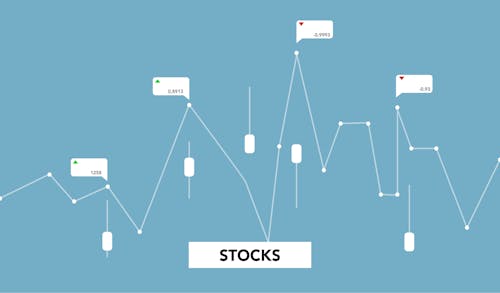3 Dividend Stocks: A Smarter Way To Boost Your Retirement Income

Image Source: Pexels
Believe it or not, seniors fear running out of cash more than they fear dying.
Also, retirees who have constructed a nest egg have valid justifications to be concerned, since the traditional ways to plan for retirement may mean income can no longer cover expenses. Some retirees are now tapping their principal to make a decent living, pressed for time between decreasing investment balances and longer life expectancies.
The tried-and-true retirement investing approach of yesterday doesn't work today.
In the past, investors going into retirement could invest in bonds and count on attractive yields to produce steady, reliable income streams to fund a predictable retirement. 10-year Treasury bond rates in the late 1990s hovered around 6.50%, whereas the current rate is much lower.
The impact of this rate decline is sizable: over 20 years, the difference in yield for a $1 million investment in 10-year Treasuries is more than $1 million.
In addition to the considerable drop in bond yields, today's retirees are nervous about their future Social Security benefits. Because of certain demographic factors, it's been estimated that the funds that pay the Social Security benefits will run out of money in 2035.
How can you avoid dipping into your principal when the investments you counted on in retirement aren't producing income? You can only cut your expenses so far, and the only other option is to find a different investment vehicle to generate income.
Invest in Dividend Stocks
As a replacement for low-yielding Treasury bonds (and other bond options), we believe dividend-paying stocks from high-quality companies offer low risk and stable, predictable income investors in retirement seek.
Look for stocks that have paid steady, increasing dividends for years (or decades), and have not cut their dividends even during recessions.
A rule of thumb for finding solid income-producing stocks is to seek those that average 3% dividend yield, and positive yearly dividend growth. These stocks can help combat inflation by boosting dividends over time.
Here are three dividend-paying stocks retirees should consider for their nest egg portfolio.
Amgen (AMGN - Free Report) is currently shelling out a dividend of $1.94 per share, with a dividend yield of 3.2%. This compares to the Medical - Biomedical and Genetics industry's yield of 0% and the S&P 500's yield of 1.69%. The company's annualized dividend growth in the past year was 10.23%.
Apple Hospitality REIT (APLE - Free Report) is paying out a dividend of $0.07 per share at the moment, with a dividend yield of 5.44% compared to the REIT and Equity Trust - Other industry's yield of 4.04% and the S&P 500's yield. The annualized dividend growth of the company was 1400% over the past year.
Currently paying a dividend of $0.4 per share, Alliance Resource Partners, L.P. (ARLP - Free Report) has a dividend yield of 6.24%. This is compared to the Coal industry's yield of 0% and the S&P 500's current yield. Annualized dividend growth for the company in the past year was 250%.
But aren't stocks generally more risky than bonds?
It is true that stocks, as an asset class, carry more risk than bonds, but high-quality dividend stocks not only have the ability to produce income growth over time but more importantly, can also reduce your overall portfolio volatility relative to the broader stock market.
A silver lining to owning dividend stocks for your retirement portfolio is that many companies, especially blue chip stocks, increase their dividends over time, helping offset the effects of inflation on your potential retirement income.
Thinking about dividend-focused mutual funds or ETFs? Watch out for fees.
If you're thinking, "I want to invest in a dividend-focused ETF or mutual fund," make sure to do your homework. It's important to know that some mutual funds and specialized ETFs charge high fees, which may diminish your dividend gains or income and thwart the overall objective of this investment strategy. If you do want to invest in fund, research well to identify the best-quality dividend funds with the least charges.
Bottom Line
Regardless of whether you select high-quality, low-fee funds or stocks, looking for a steady stream of income from dividend-paying equities can potentially lead you to a solid and more peaceful retirement.
More By This Author:
3 Stocks Displaying Remarkable Relative Strength In 2022
DocuSign Q2 Preview: Can Shares Find Any Relief?
Zumiez Q2 Preview: Rebound Quarter Inbound?
Disclaimer: Neither Zacks Investment Research, Inc. nor its Information Providers can guarantee the accuracy, completeness, timeliness, or correct sequencing of any of the Information on the Web ...
more


